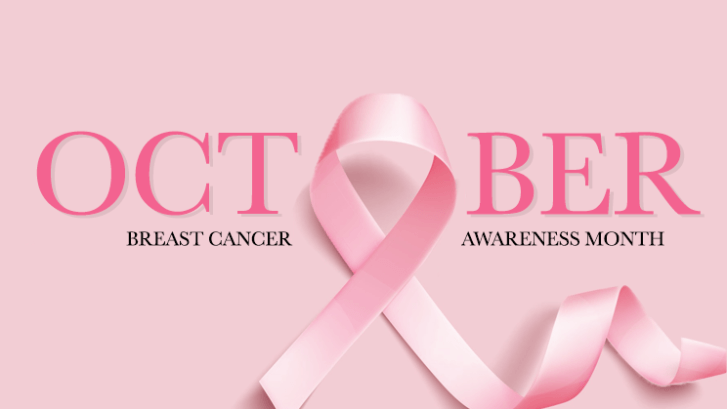What to Know During Breast Cancer Awareness Month
Long-time cancer-screening activist Katie Couric, 65, announced last month that she’d been treated for breast cancer. Within days came the news that WNBA star Tiffany Jackson had died of the disease at age 37.
These two stories help to highlight Breast Cancer Awareness Month in October, both the importance of screening and the fact that even young women can this deadly disease.
So our primary care concierge doctors in Jupiter want to offer you some facts you may not have known about breast cancer and what to look out for.
Some Little-known Facts
- Breast cancer is the most common form of cancer in women in the U.S., except for skin cancers, according to the American Cancer Society (ACS). And contrary to common belief, 85 percent of American women who are diagnosed have no family history of the disease.
- This year, about 287,850 new cases of invasive breast cancer will be diagnosed in women, with about 51,400 of those being ductal carcinoma in situ (DCIS). Nearly all women with this early stage of breast cancer can be cured.
- About 43,250 women will die from breast cancer.
- But it’s not just women. The ACS reports that in 2022, about 2,710 new cases of invasive breast cancer will be diagnosed in men, and about 530 of them will die from it.
- While the majority of breast cancer cases are in women over the age of 50, one in 10 women diagnosed is under the age of 45, according to the Centers for Disease Control and Prevention (CDC).
- And Yale Medicine reports that breast cancer is the most common form of cancer in women ages 15-39.
Screening Guidelines Vary
Although different organizations offer different guidelines for cancer screening, in general, regular cancer screening can catch cancer before someone has symptoms. This allows a small, localized area to be removed, hopefully before it can spread.
The U.S. Preventive Services Task Force (USPSTF), for example, recommends mammography screenings every two years (biennial) for women ages 50 to 74 years, while the ACS recommends such screenings annually for women ages 50 to 54 and every other year after that.
As for the standard clinical breast exam, the International Agency for Research on Cancer (IARC) states: “There is inadequate evidence that clinical breast examination reduces breast cancer mortality.” The American College of Physicians agrees. Even the ACS doesn’t recommend clinical examination to screen for breast cancer, preferring to emphasize mammography as the preferred method of detection.
The American College of Obstetricians and Gynecologists (ACOG) says, “Decisions between screening with mammography once a year or once every two years should be made through shared decision-making after appropriate counseling.” In other words, the benefits of annual mammography for those with average risk haven’t been firmly established, so it’s up to the woman and her doctor to decide on the frequency.
Different Outcomes
Katie Couric co-founded the organization Stand Up to Cancer after the death of her first husband, Jay Monahan, from colon cancer, so she was an advocate for regular cancer screenings. Still, her diagnosis stunned her.
Couric told CNN that she went for a mammogram in the summer, which found her breast cancer.
“I think those words, ‘It’s cancerous or you have cancer’ do stop you in your tracks,” she said. But her doctor told her it was treatable, so she underwent a lumpectomy in July, followed by radiation.
Unfortunately, as in the case of Tiffany Jackson, breast cancer is more likely to be found at a later stage among women under the age of 45, and is often more aggressive and difficult to treat.
She was originally diagnosed with stage three breast cancer in 2015 and thought her treatment had been successful.
But studies show that women who are first diagnosed before age 35 have between a 13-38 percent risk of recurrence that spreads to other parts of the body, while in women ages 50 and over, that risk is between 4-29 percent.
What To Do
Besides having the recommended mammographies, for both men and women of all ages, it’s important to know the risk factors for the disease as well as the early signs.
Risk factors include:
- getting older
- having dense breasts
- a family history
- hormonal changes
- excess alcohol consumption
- environmental factors, including exposure to radiation
- obesity and overweight
- beginning periods before age 12 and menopause after age 55
- becoming pregnant at an older age or never being pregnant
- taking hormones, including birth control pills and hormone replacement therapy
- physical inactivity
- night-shift work
- smoking
It’s important to become familiar with your breasts, so you’ll know what symptoms to look for.
Warning signs include:
- new lump in the breast or underarm (armpit)
- thickening or swelling of part of the breast
- irritation or dimpling of breast skin
- redness or flaky skin in the nipple area or the breast
- pulling in of the nipple or pain in the nipple area
- nipple discharge other than breast milk, including blood
- any change in the size or shape of the breast
- pain in any area of the breast
The CDC cautions, “Keep in mind that these symptoms can happen with other conditions that are not cancer,” so don’t panic if you see any of them. But do contact us right away if you do see such changes.
Remember, the sooner breast cancer is caught, the easier it is to treat.

